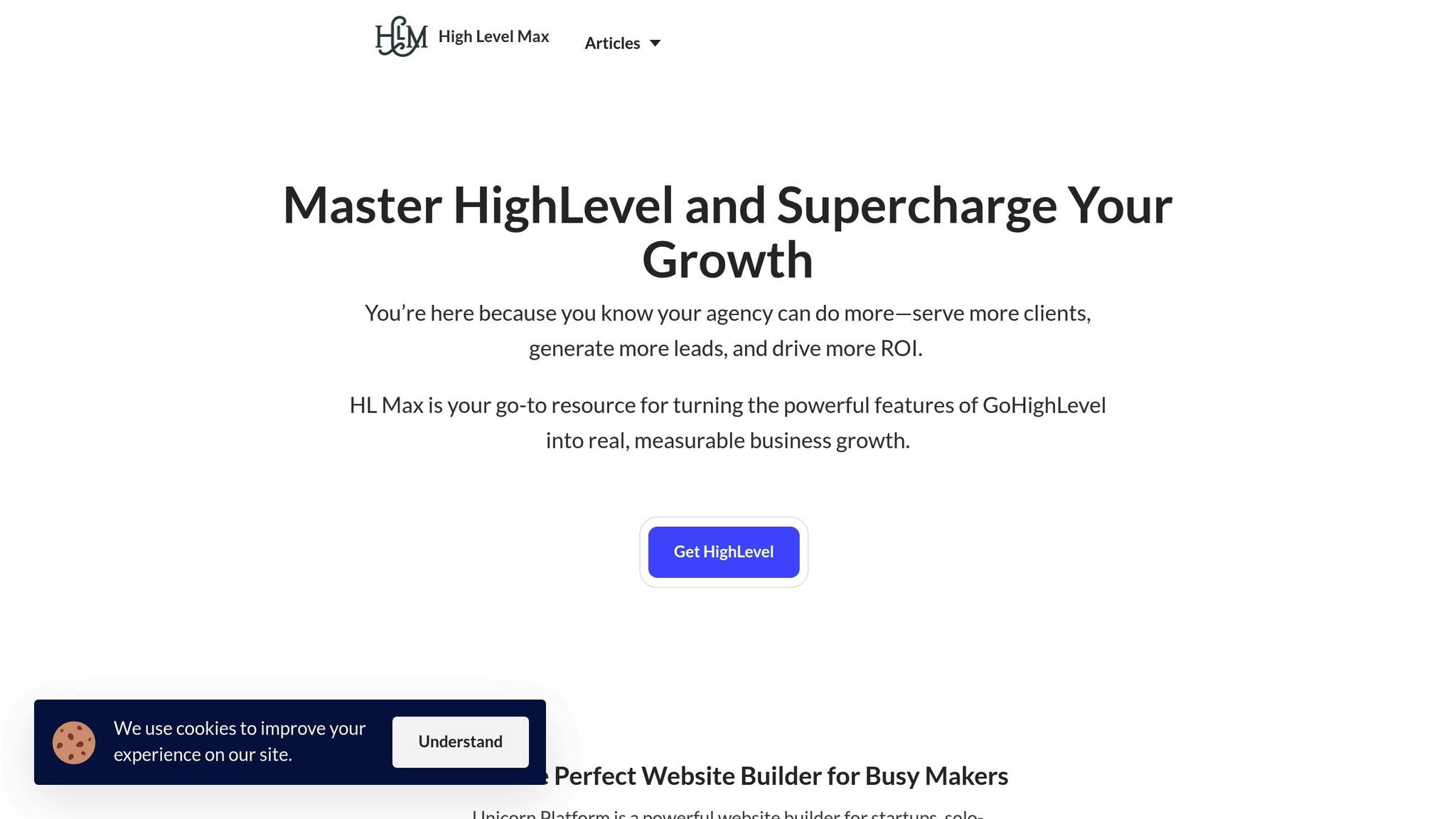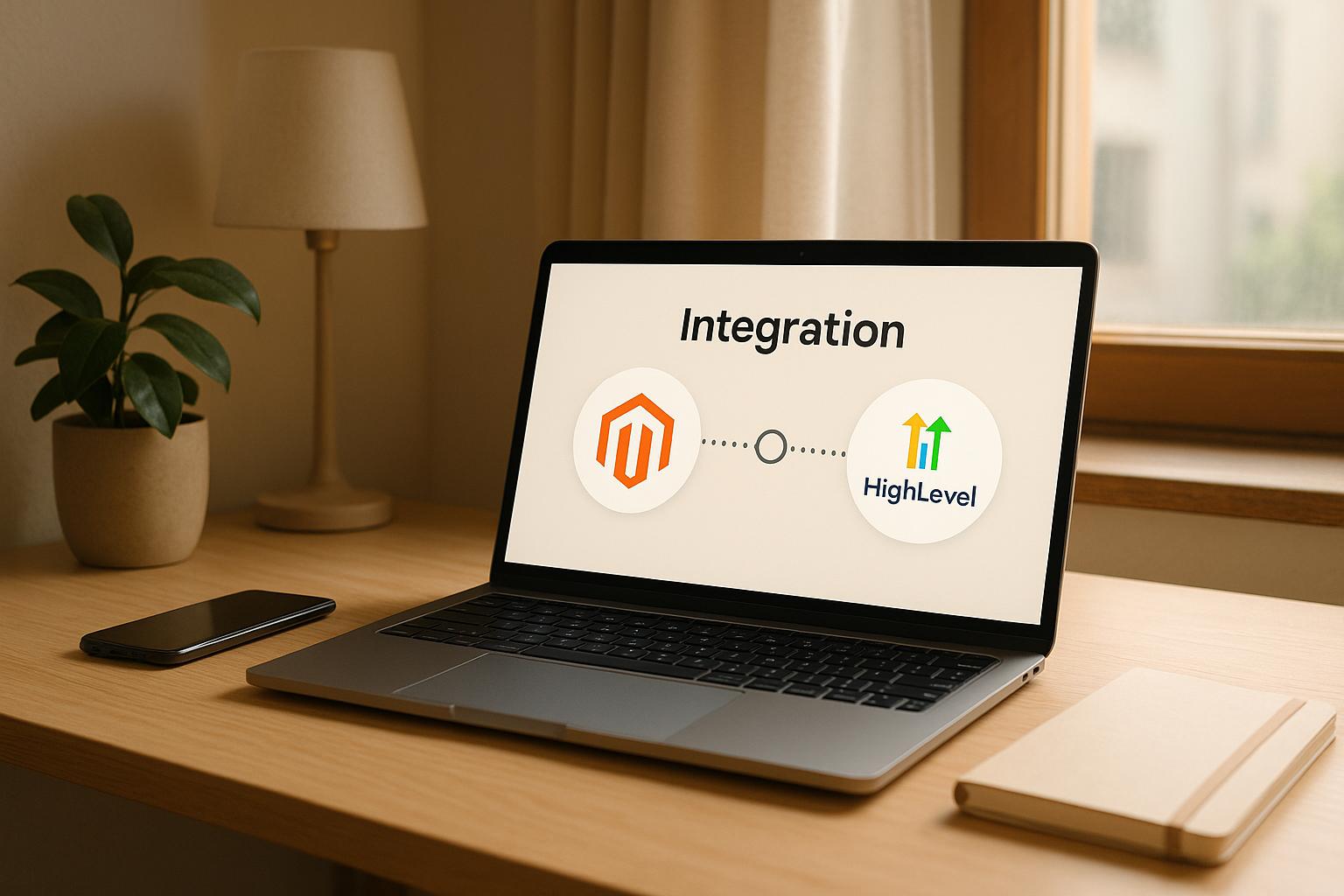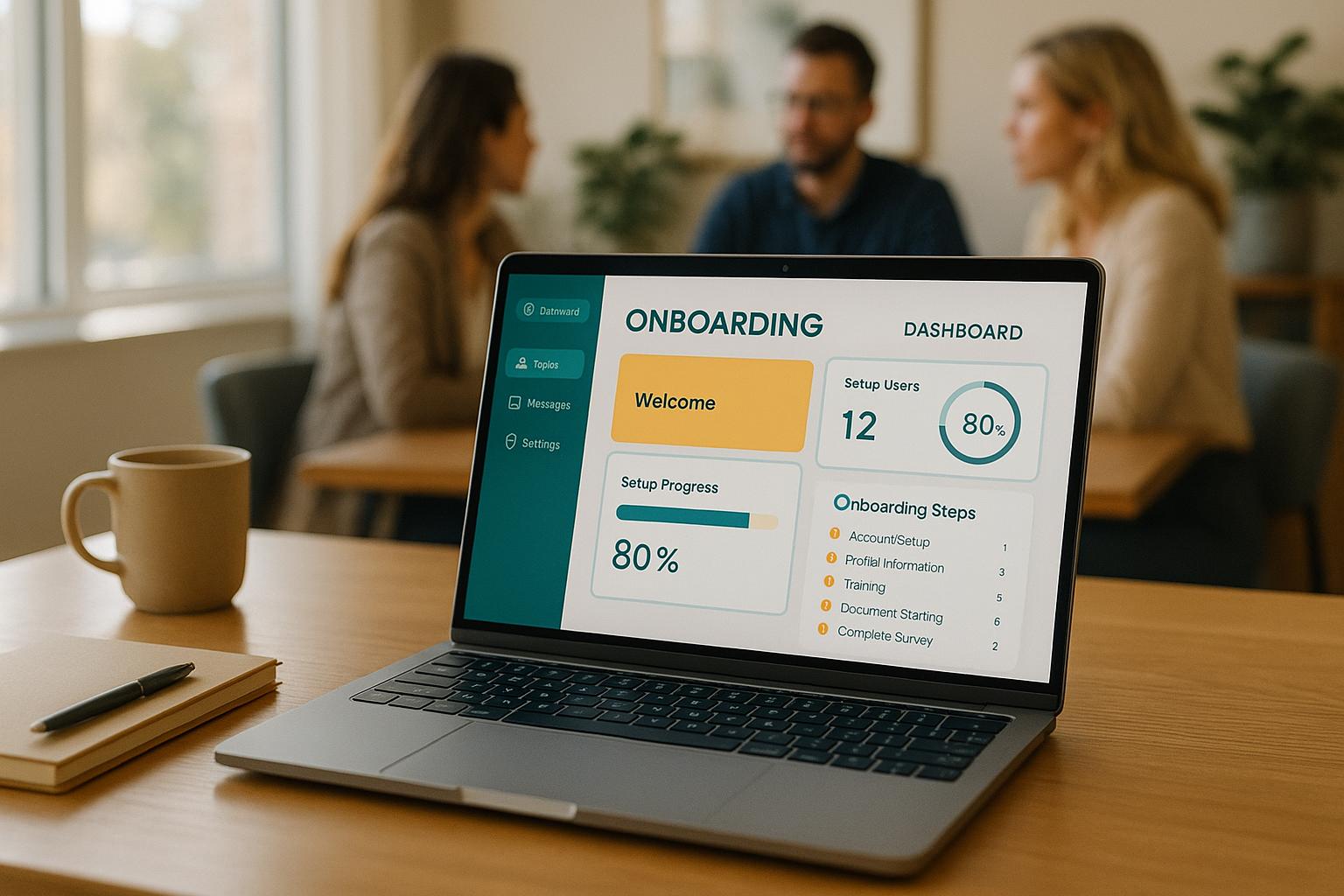Want to close more deals and streamline your sales process? HighLevel offers tools to build efficient sales pipelines with automation, tracking, and analytics. Here's a quick summary of the 10 steps to create and optimize your pipeline:
- Access Pipeline Tools: Find the pipeline feature under the "Opportunities" section in your HighLevel account.
- Create a Pipeline: Name your pipeline and define stages like Lead Capture, Nurturing, Qualification, Proposal, and Closing.
- Set Up Automation: Use workflows to automate tasks like follow-ups and lead progression.
- Add Custom Fields: Track important deal details like budgets, deadlines, and lead profiles.
- Implement Lead Scoring: Assign points based on actions (e.g., email opens, bookings) to prioritize high-value leads.
- Save Templates: Create reusable pipeline templates for different workflows.
- Track Metrics: Use HighLevel's reporting tools to monitor performance metrics like win rates and stage transitions.
- Fix Issues: Address bottlenecks like delayed follow-ups or poor lead qualification.
- Regular Updates: Evaluate and adjust pipelines daily, weekly, and monthly.
- Focus on Key Metrics: Track win rates, pipeline velocity, and drop-off rates to improve results.
Quick Overview of Pipeline Benefits
- Automated Workflows: Save time with automated emails and follow-ups.
- Integrated Tracking: Manage all communications in one place.
- Actionable Analytics: Identify weak spots and improve conversions.
Start small by creating a single pipeline, test it, and gradually scale up. HighLevel's tools make it easier to manage leads, close deals, and grow your business.
Create and Automate Opportunities & Pipelines in GoHighLevel
Step 1: Find the Pipeline Tool
This step lays the groundwork for building and improving your sales pipeline.
Where to Find the Pipeline Tool
You can locate the pipeline tool in the Opportunities section of your subaccount. Here's how to access it:
- Log into your HighLevel account.
- Select the subaccount you want to work with.
- Click Opportunities in the sidebar.
- In the top navigation menu, click Pipelines.
You can also find it by going to Settings > Pipelines.
Key Features of the Pipeline Dashboard
Once you access the pipeline, you'll see a dashboard that includes:
- Stage Overview: A visual breakdown of pipeline stages like Lead Capture, Qualification, Appointment Setting, Follow-up, and Closing.
- Deal Cards: Movable cards representing individual opportunities.
- Analytics Panel: Real-time data on pipeline performance.
- Action Tools: Quick-access buttons for frequently used tasks.
Familiarizing yourself with these features is essential for setting up and fine-tuning your pipeline. Once you're comfortable with the tool, you're ready to move on to Step 2.
Step 2: Build Your Pipeline
Once you're comfortable with the pipeline tool, the next step is to create a sales pipeline that helps move your deals forward efficiently.
Start a New Pipeline
Navigate to Opportunities > Pipelines and click on "Create Pipeline". Give your pipeline a clear and descriptive name that matches its purpose, like "Client Acquisition Pipeline" or "Product Sales Pipeline". After naming it, outline the stages that will guide your deals through the process.
Set Up Pipeline Stages
Every pipeline in HighLevel comes with default "Won" and "Lost" stages. To add more stages:
- Click "Add Stage" in your pipeline.
- Define each stage based on its purpose.
- Arrange the stages in a logical sequence.
Here’s a simple breakdown of common sales stages:
| Stage | Purpose |
|---|---|
| Lead Acquisition | Where initial contact with potential clients happens. |
| Nurturing | Focused on building trust and rapport. |
| Qualification | Assessing if the lead is a good fit. |
| Proposal | Presenting solutions and pricing. |
| Close | Finalizing and sealing the deal. |
Once your stages are set, you can add automation to streamline actions at each step.
Configure Stage Actions
For each stage, you can automate specific actions. Go to Automation > Workflows, choose "Pipeline Stage Changed" as the trigger, and set up tasks like sending emails, assigning tasks, or scheduling follow-ups.
For instance, when a lead enters the "Qualification" stage, you can automate actions like sending a questionnaire, creating a task for your sales team, and scheduling a follow-up call. These workflows could include email sequences, SMS notifications, or reminders for your team.
Keep your pipeline straightforward, focusing on the key steps that help close deals. Review and adjust your pipeline regularly to ensure it aligns with your business goals.
sbb-itb-f031672
Step 3: Add Advanced Tools
Set Up Custom Fields
Custom fields allow you to track key details about your deals. To create them, head to Custom Fields in your sub-account settings and click "Add Field." Select "Opportunity" as the object type and choose a field format that fits your needs:
| Field Type | Best Used For | Example |
|---|---|---|
| Text Input | General information | Client company name |
| Number | Numeric data | Deal size estimate |
| Monetary | Financial details | Budget allocation |
| Date Picker | Managing timelines | Proposal deadline |
| Dropdown | Predefined options | Industry category |
Organize these fields into folders for better clarity. For instance, group financial details under a "Budget Details" folder and client-related information under "Client Profile."
Create Lead Scoring Rules
A scoring system helps you focus on leads that are most likely to convert. HighLevel's lead scoring tracks engagement and behaviors, making it easier to prioritize opportunities.
Here’s how to set up your scoring model:
- Identify key actions that indicate interest.
- Assign points to these actions.
- Use automation to update scores dynamically.
For example, you could assign points like this:
| Action | Points | Reasoning |
|---|---|---|
| Email Opens | 2 points | Shows engagement |
| Form Submissions | 5 points | Indicates interest |
| Calendar Bookings | 10 points | Signals high intent |
| Website Visits | 3 points | Research phase |
Use the "Math Operation" action in workflows to adjust scores automatically based on these behaviors. You can also set thresholds to trigger specific actions. For instance, when a lead hits 20 points, move them to the qualification stage automatically.
Save Pipeline Templates
After fine-tuning your pipeline, save it as a template for future use. Templates are especially helpful if you manage multiple clients or departments with similar workflows.
To make your templates as effective as possible:
- Create separate templates for different business needs.
- Include all the custom fields you’ve set up.
- Add standard automation workflows.
- Document each template’s purpose and ideal use case.
Once saved, you’ll have a ready-to-use structure for tracking and improving your pipeline results.
Step 4: Track and Improve Results
View Pipeline Reports
Use HighLevel's Reporting Dashboard to keep an eye on your pipeline's performance. This dashboard pulls together data from various channels to give you a clear picture:
| Report Type | Key Metrics Tracked |
|---|---|
| Attribution | Form submissions, survey completions, calendar bookings |
| Agent Activity | Call duration, SMS delivery, email engagement |
| Appointment Status | Appointment outcomes like show rates and cancellations |
| Ad Performance | Campaigns, ad groups, ads, keywords, and conversions |
You can set specific date ranges to focus on particular periods. For same-day analysis, make sure the start and end dates are identical. By regularly checking these metrics, you can quickly identify trends and make informed decisions to fine-tune your pipeline.
Fix Pipeline Problems
A staggering 79% of leads handed to sales teams never convert. This underscores the need for a well-managed pipeline.
Here are common issues and how to address them:
| Problem Area | Solution Strategy | Impact |
|---|---|---|
| Lead Qualification | Use AI-driven scoring | Simplifies lead qualification |
| Follow-up Delays | Automate response sequences | Improves follow-up speed |
| Decision Delays | Add urgency triggers | Encourages quicker decisions |
| Poor Conversion | Track metrics by stage | Can boost win rates by up to 19% |
"KPIs allow us, as the agency, to demonstrate our value to the client... Ultimately, what is their ROI from our efforts? When you can clearly demonstrate this month over month, it increases your retention rate and keeps clients paying you month after month." – Jacob Hicks, Owner, Freedom Leads
Tackle these problem areas and keep reviewing your performance to ensure continuous improvement.
Make Regular Updates
A consistent review schedule is key. Sales operations that stick to regular evaluations see win rates improve by 15%.
Daily Tasks:
- Check lead volumes, stage transitions, and how well automations are working.
Weekly Tasks:
- Analyze win rates and sales cycle durations.
- Review the number of opportunities in each pipeline stage.
Monthly Tasks:
- Evaluate CAC (Customer Acquisition Cost) and LTV/CAC ratios.
- Measure pipeline velocity.
- Update lead scoring criteria.
Conclusion: Launch Your Pipeline
Key Components for Success
Building an effective HighLevel pipeline means focusing on the elements that drive results. Here's a quick breakdown:
| Pipeline Element | What to Focus On | Why It Matters |
|---|---|---|
| Lead Qualification | Use frameworks like BANT | Better lead quality |
| Process Automation | Create workflows for new leads | Quicker response times |
| Data Management | Leverage CRM tools for tracking | Improved forecasting |
| Performance Metrics | Track key indicators regularly | Smarter, data-driven decisions |
Fine-tune these components with expert advice and tailored strategies.
Explore HL Max for Advanced Tools

Looking to take your pipeline to the next level? Check out HL Max (https://hlmax.co). They offer detailed tutorials and guides on topics like automation, lead scoring, custom field setup, and performance tracking. These resources are designed to help you streamline and optimize every aspect of your pipeline.
Start Small, Scale Smart
When you're ready to implement, focus on tracking essential metrics such as:
- Win Rate: Measure how often leads convert.
- Sales Cycle Length: Shorten the time it takes to close deals.
- Pipeline Velocity: Keep an eye on how quickly leads progress through stages.
- Drop-off Rates: Pinpoint where leads are getting stuck or lost.
Begin with a single pipeline template. Test it thoroughly, analyze the data, and expand based on what works. Regular updates and data-driven tweaks will keep your pipeline performing at its best, helping you close more deals efficiently.



